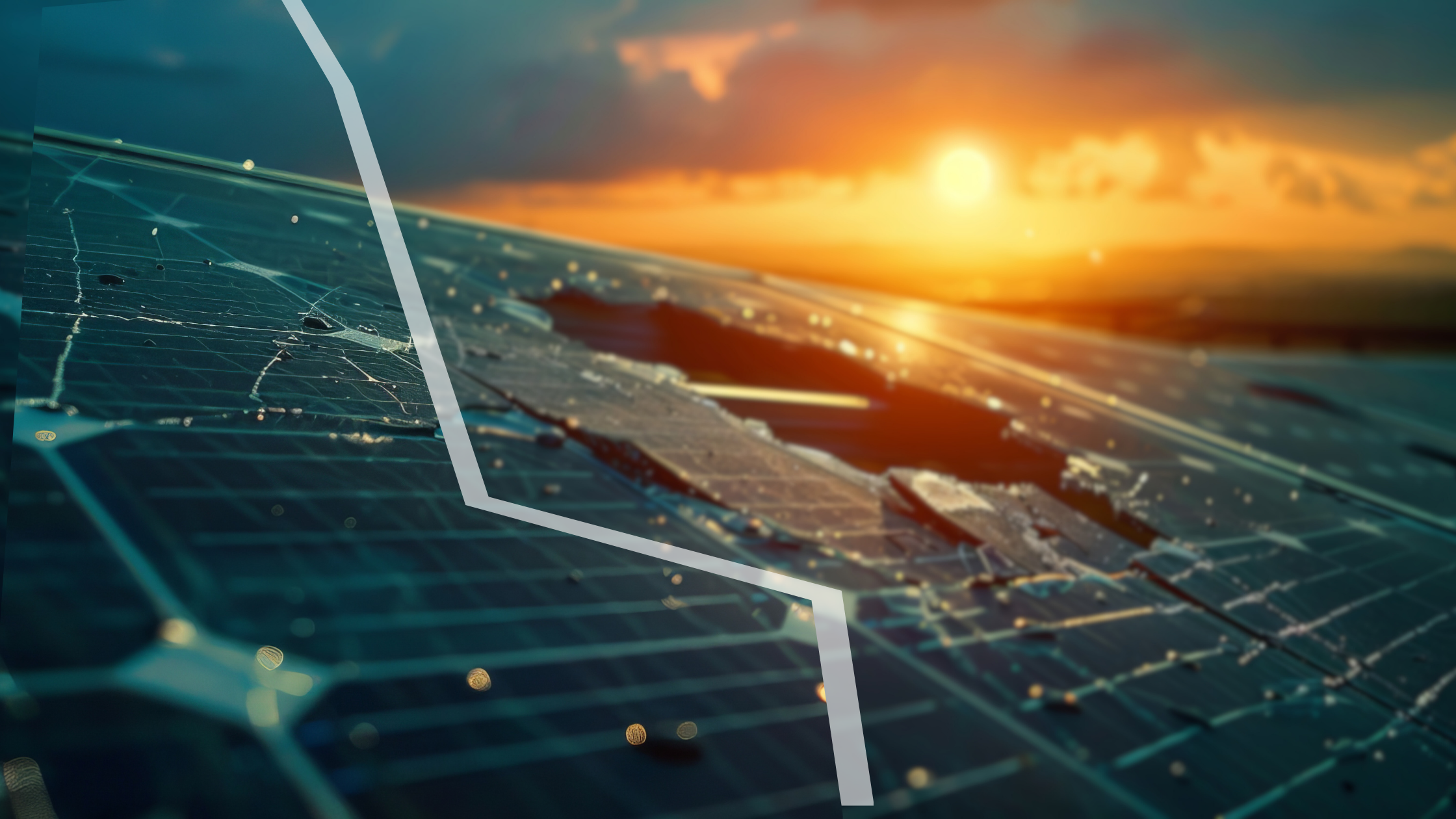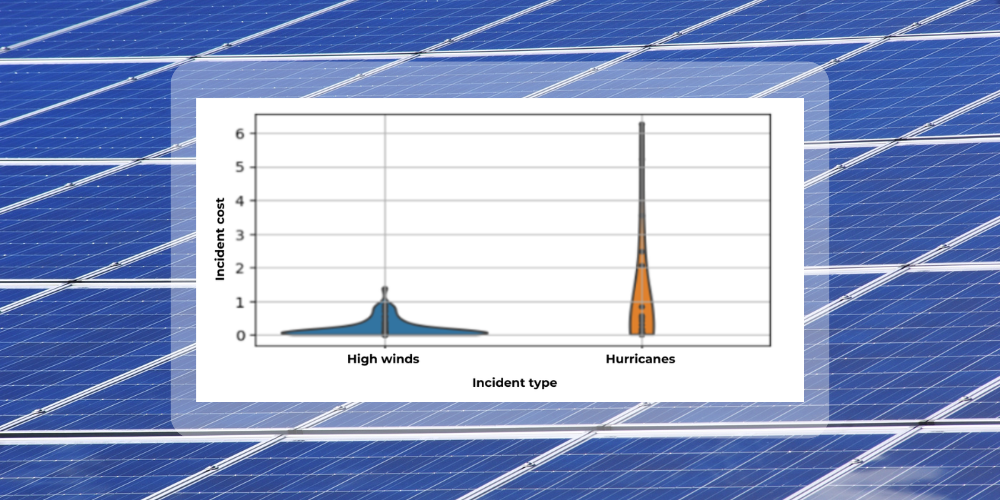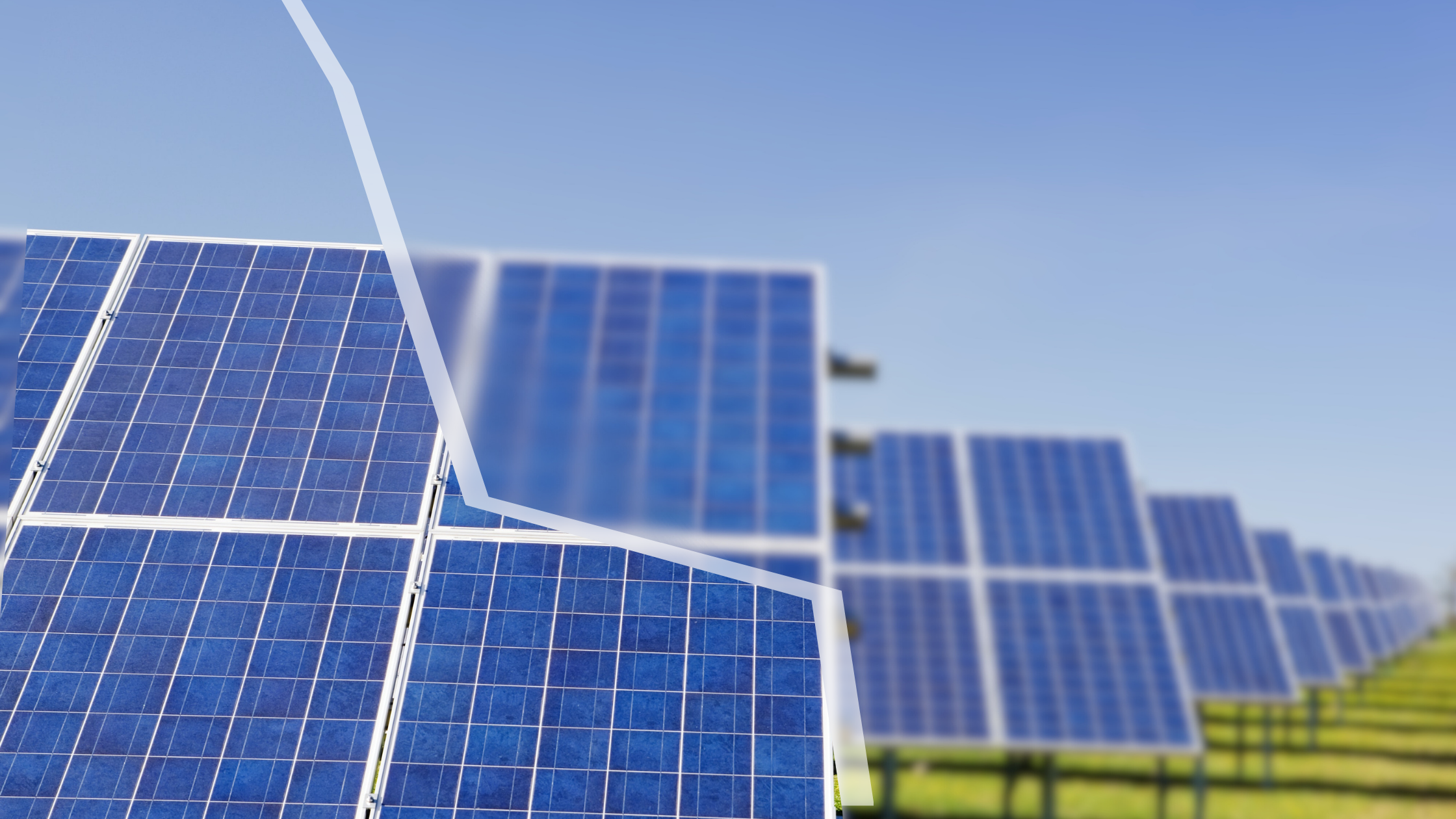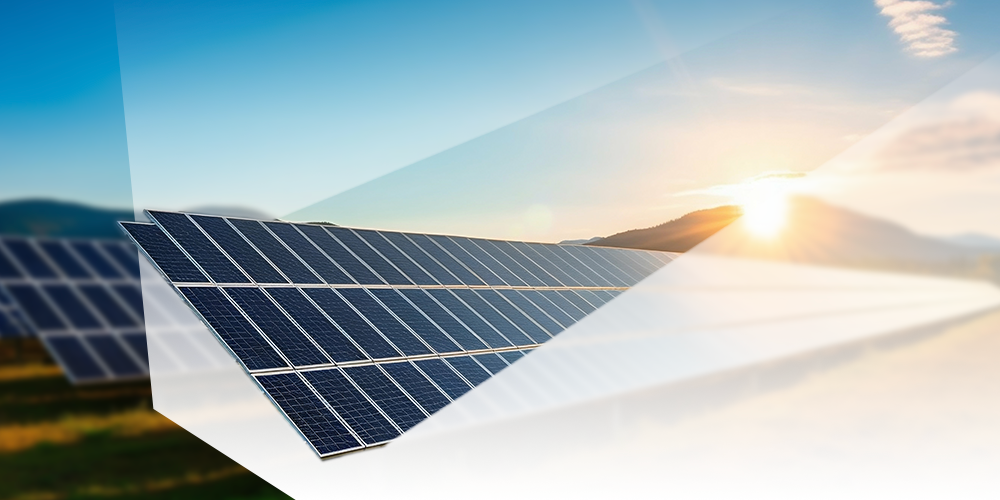Climate change is dramatically increasing the destruction caused by hail storms2. As hail events become more frequent, owners need to understand how to minimize the risks associated with these storms.
Hail commonly occurs under very specific conditions — when the freezing level is below the altitude of 11,000 ft. This means that some locations are more likely to experience hail risk, such as hail alley in the U.S.3 (Nebraska, Colorado and Wyoming), as well as China, Russia, India, Italy and Australia’s Gold Coast. But as climate change alters weather patterns, not only will hail storms become more frequent, the areas in which they occur will shift.
Most of the hailstorms occur on the lower spectrum of potential damage, however those that are high severity can wreak havoc on properties, industrial facilities and renewable generation assets.
Why is hail a concern for solar farms?
Hail is extremely detrimental to solar farms and is the largest weather risk4 to solar farms in terms of asset damages and losses. According to Clir’s risk dataset1, it is also one of the more costly risks for solar farms, costing an average of $20,535,584 per incident.
Although the severity of hail storms can vary greatly, they often wreak havoc on solar panels as the farms operate unshielded from atmospheric conditions, leaving key equipment exposed to the elements. With climate change, it is expected that the hail storms will get more intense and hail will get larger2, leading to increased destruction.
Understanding the potential consequences of hail is crucial for mitigating risks and ensuring the long-term performance of PV systems. The common causes of failure and damage from hail to PV farms include:
- Solar panel damage
- Mechanical stress on wiring
- Structural damage
- Inverter damage
For example, direct impact of hailstones on solar panels can result in cracks or fractures in the glass surface, backsheet or encapsulation materials. Solar cells within the panels can also be affected, experiencing cracks or breakages that impair their electrical output and reduce module efficiency. The impact of hail can also cause wiring connections to become loose or disconnected, compromising the integrity of the electrical connections within the system. Large hailstones or strong winds associated with hail storms can cause considerable harm to the mounting system of the PV farm. This can result in weakened support structures, misalignment of panels or even detachment of panels from the mounting system.
Hail can lead to long-term performance degradation of the modules through micro-cracks and delamination. This can cause inefficiencies in the modules, leading to a decrease in overall power generation. That’s why it’s recommended to inspect farms for any damage following hail storms. Quick repair of issues can result in less downtime than complete failure of the system.
How can it impact operating costs?
Hail is an increasingly significant concern for insurance companies due to the soaring severity of damage, leading to costly hail-related incidents. This includes renewable energy insurance — according to our database of global risk data, hail damage results in the largest incident payout by a significant amount.
The most common and expensive damage that can occur from hail is damage to the PV panels. Since they are the core of solar generation and the most expensive CAPEX component, it can be costly if these get damaged. In the right conditions, the impact of hail stones into the PV module glass will cause the glass to shatter and inhibit PV module’s ability to generate energy. Extreme events have recorded hailstones piercing through the modules completely. In one case, an owner needed to change more than half of the PV panels on site due to hail storms.
Although hail storms tend to be confined to particular regions — continental interiors of the mid-latitudes — there is a high likelihood that climate change will disrupt usual weather patterns. With the damages and high costs associated with hail storms, Clir recommends all owners, asset managers and O&M providers prepare financially for the destruction that comes with hail storms.
Leveraging data for mitigation efforts
Clir’s industry data enables a hail risk analysis to quantify the magnitude of risk for hail at all client's sites. This, along with a site-specific mitigation roadmap, equips clients with the information to reduce hail damages.
Mitigation efforts begin in the site design phase, with panels and modules that can withstand hail storms and have a high durability. It also involves ensuring operating practices are aligned with risk mitigations, as panels should be turned away from wind and hail to minimize damages.
Client’s can leverage Clir’s database of standard and best-practice mitigations to understand what is needed at their solar farm to withstand hail storms.
Resources:
- Clir’s 250+ GW dataset of operational and risk data.
- “Hailstorms and climate change: What to expect.” Yale Climate Connections. March 2022. Hailstorms and climate change: What to expect » Yale Climate Connections
- “Severe Weather 101.” NOAA National Severe Storms Laboratory. Hail Basics
- “Sunshine Not The Only Weather Impact For Growing Solar Industry.” Forbes. August 2023. Sunshine Not The Only Weather Impact For Growing Solar Industry
- “Understanding the effects of hailstorms on your home.” The Hanover Insurance Group. https://www.hanover.com/resources/tips-individuals-and-businesses/prepare-now-learn-how/understanding-effects-hailstorms






